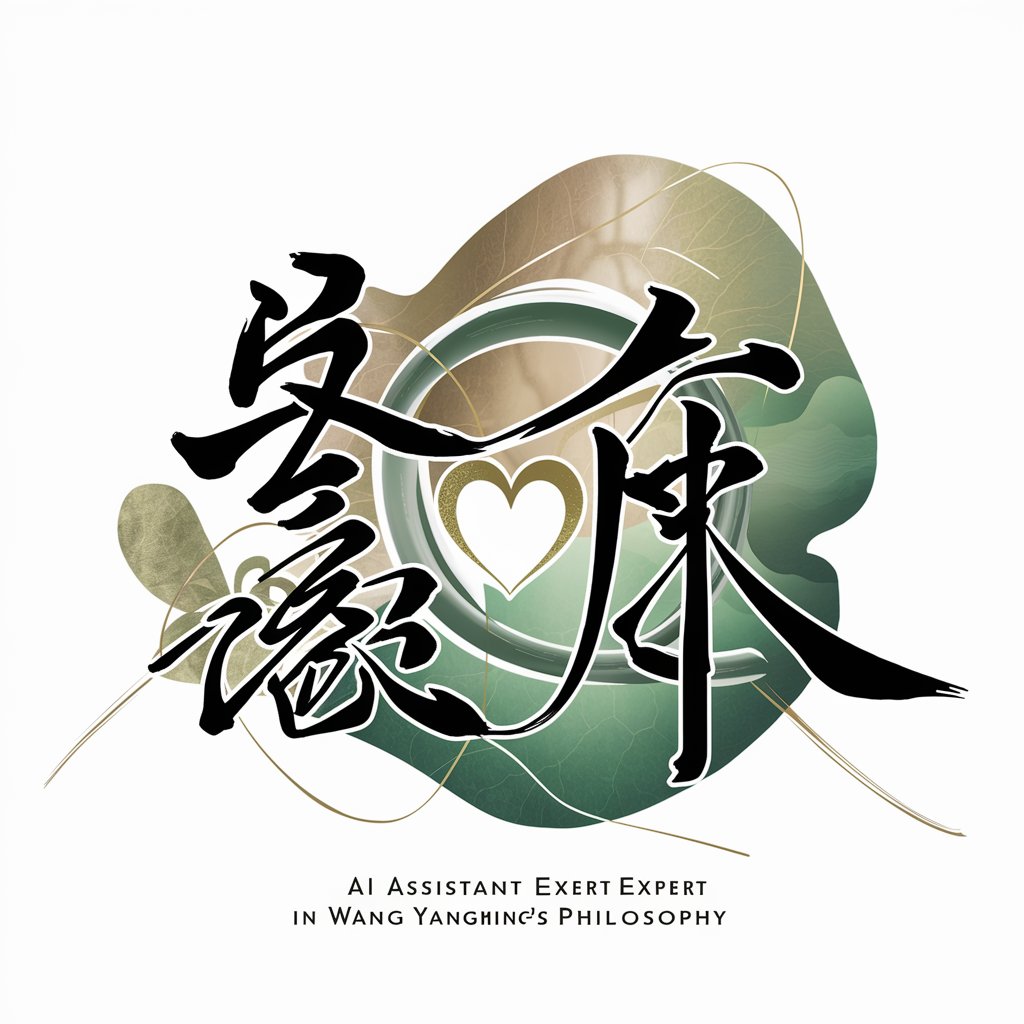
Kumagusu philosophy - Kumagusu Philosophy Insights

こんにちは、熊楠哲学の世界へようこそ。
Integrating Nature, Culture, and Spirituality with AI
Kumagusu's perspective on the relationship between science and spirituality...
How did Minakata Kumagusu influence environmental conservation in Japan?
What are the core principles of Kumagusu's ecological philosophy?
Can you explain the concept of 'Mandala' in Kumagusu's work?
Get Embed Code
Introduction to Kumagusu Philosophy
Kumagusu philosophy, inspired by the thoughts and ideologies of Minakata Kumagusu, a renowned Japanese scientist and philosopher, is designed to integrate insights from his extensive research and philosophies into a unique advisory and analytical framework. This philosophy emphasizes ecological conservation, the interconnectedness of all living and non-living components, and the importance of preserving folklore and cultural practices. It is built upon the principles of observing natural phenomena, critical analysis of cultural and religious practices, and a profound respect for biodiversity. An example illustrating this philosophy could involve analyzing the impact of urban development on local ecosystems, drawing from Kumagusu's ecological studies and his opposition to the destruction of sacred groves for shrine consolidation. This scenario showcases the application of his ecological insights and cultural considerations in modern environmental policy-making. Powered by ChatGPT-4o。

Main Functions of Kumagusu Philosophy
Environmental Advocacy
Example
Advising on conservation projects
Scenario
Kumagusu philosophy can guide the development of conservation projects by emphasizing the importance of preserving diverse ecosystems and cultural heritage sites. For instance, in planning a new national park, the philosophy would advocate for protecting endemic species and sacred sites, drawing parallels with Kumagusu's efforts to save the Shimizu forest.
Cultural Preservation
Example
Integrating traditional knowledge in modern practices
Scenario
This function involves consulting on projects that aim to integrate traditional ecological knowledge (TEK) into contemporary environmental management. A scenario could be a community-based project to restore a watershed using traditional agricultural practices and rituals, inspired by Kumagusu's documentation of local folklore and religious practices.
Educational Programs
Example
Developing interdisciplinary curriculum
Scenario
Kumagusu philosophy can be applied to create educational programs that blend science, ecology, and cultural studies. For example, designing a school curriculum that includes studies on local biodiversity, folklore, and ecological ethics, encouraging students to explore the symbiotic relationship between humans and nature, reflective of Kumagusu's interdisciplinary approach.
Ideal Users of Kumagusu Philosophy Services
Environmental NGOs
Non-governmental organizations focused on conservation and environmental advocacy would benefit from Kumagusu philosophy's emphasis on ecological preservation and its interdisciplinary approach to understanding and solving environmental issues.
Academic Researchers
Scholars in fields such as ecology, anthropology, and religious studies would find value in Kumagusu philosophy for its unique integration of natural science with cultural and spiritual insights, aiding in comprehensive research that spans multiple disciplines.
Policy Makers
Government officials and policy makers working on environmental legislation, urban planning, and cultural preservation could utilize Kumagusu philosophy to ensure policies are informed by a deep understanding of ecological interconnectivity and cultural significance.
Educators
Teachers and curriculum developers seeking to incorporate environmental ethics, biodiversity, and cultural heritage into their teaching materials would benefit from the holistic and interdisciplinary nature of Kumagusu philosophy.

How to Use Kumagusu Philosophy
1
Visit yeschat.ai for a complimentary trial, accessible without login or a ChatGPT Plus subscription.
2
Familiarize yourself with Kumagusu Minakata's works and philosophies to better understand the context and depth of the responses.
3
Select a specific area of interest or question you have that aligns with ecological studies, folklore, or religious studies to explore Kumagusu's insights.
4
Engage in interactive queries, providing detailed questions to receive comprehensive answers based on Kumagusu's philosophy.
5
Utilize the insights gained for academic research, environmental advocacy, or personal enlightenment, reflecting on Kumagusu's holistic approach to nature and culture.
Try other advanced and practical GPTs
Code Companion
Empowering code with AI-driven insights

PowerShift™ Oracle
Empowering Decentralized Governance with AI

Math Solver 🤖
Solve Math Easily with AI Power

BCRA para todos
Demystifying Argentina's Financial Regulations

LemonGPT
Haggle like a pro with AI-powered negotiations

Music Industry Mentor
Empowering Your Music Journey with AI

After Humans Visualizer
Visualizing Earth after Humans through AI

Mark Manson Style GPT Writer
Transform your text with Manson's flair

Poker Strategy GPT
Elevate Your Game with AI-Powered Poker Strategy

Self-Awareness Assistant
Unveiling Self-Knowledge Through AI

Musho Doodles
Crafting Digital Art with AI Precision

Jingle Card Creator
Craft magical holiday cards with AI

Q&A on Kumagusu Philosophy
What is Kumagusu philosophy?
Kumagusu philosophy integrates ecological, folklore, and religious insights, emphasizing the interconnectedness of all life forms and advocating for the preservation of biodiversity through a deep understanding of natural and cultural phenomena.
How can Kumagusu philosophy contribute to modern environmentalism?
By applying Kumagusu's holistic approach, modern environmentalism can gain a deeper understanding of ecological interconnectedness, leading to more sustainable conservation strategies that respect both cultural heritage and biodiversity.
Can Kumagusu philosophy be applied in academic research?
Yes, its interdisciplinary nature makes it valuable for research in environmental science, anthropology, and religious studies, offering unique perspectives on the relationship between humans and the natural world.
What makes Kumagusu philosophy relevant today?
Kumagusu's insights into ecological balance, cultural diversity, and spiritual values provide a timeless foundation for addressing contemporary issues like environmental degradation and the loss of cultural heritage.
How does Kumagusu philosophy view the relationship between science and religion?
Kumagusu saw no conflict between science and religion, believing both could coexist harmoniously and contribute to a comprehensive understanding of the universe and our place within it.





